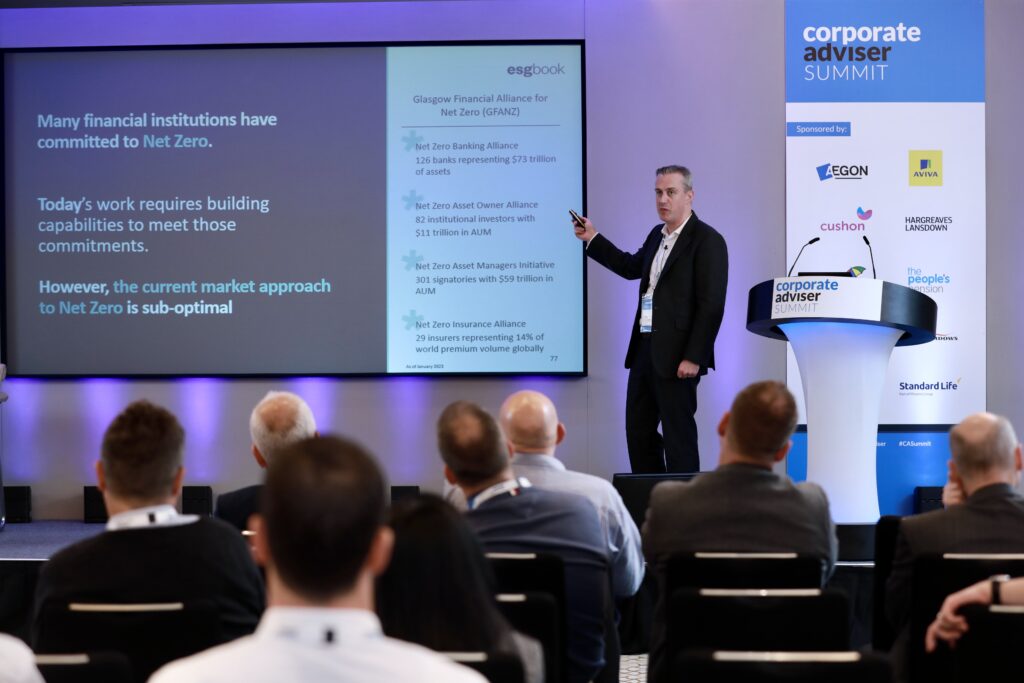Pension schemes and investment funds can invest in ESG asset without sacrificing performance, but better metrics are needed to help them navigate this economic transition.
This was the main conclusion of a talk at Corporate Adviser’s summit, by Leon Saunders Calvert, chief product officer at ESG Book.
In a presentation that helped explain and demystify the various net zero metrics used, Saunders Calvert said the market was still maturing.
Currently he said it remained difficult for schemes and institutional investors to make sensible capital allocation decisions while there was still very little data available on Scope 3 emissions.
“At present the market is deficient when it comes to full disclosure of this data,” he said. And he acknowledged that political issues in the US around ESG has the potential to create a more “dysfunctional market” in that region.
The lion’s share of the published emissions data – currently required in pension schemes’ TCFD reports – relates to scope 1 and scope 2 greenhouse gas emissions.
Scope 1 emissions cover a company’s own direct emissions while scope 2 is the indirect emissions from the generation of purchased energy. Most listed companies now publish this data. In contrast scope 3 emissions relate to the carbon emissions generated both in the supply chain and by customer use.
Saunders Calvert said: “There is enormous focus on the disclosure of these scope 1 and scope 2 emissions but it is these scope 3 emissions that are the real problem, and can account for around 85 per cent of total emissions for many companies.”
He added: “These scope 3 emissions are the most important data point.”
But Saunders Calvert said it was “ludicrously difficult” to get accurate actuarial data on scope 3 emissions at present, as there is likely to be a degree of double counting when companies try to calculate emissions from supply chains and customer use.
Given this, Saunders Calvert said that when making capital allocation decisions it is more important to look at future trajectories rather than disclosed emissions today.
Investing in companies with relatively low scope 1 and scope 2 emissions today may be less effective in addressing climate change than investing in companies that have high emissions today but credible plans to decarbonise going forward, he said.
Saunders Calvert also highlighted the proliferation of standard setters in this area, all of whom are giving guidance on what good ESG reporting should look like.
As Saunders Calvert pointed there is often very little crossover between these different organisations. “This is not helping the market to mature,” he said. This complexity has been further by a raft of policymaking from governments with over 730 policy revisions – relating to climate change reporting – cross 50 of the largest economy in recent years.
“There are no a lot of financial companies and institutions creating and committing to net zero targets,” he said.
Despite the challenges he said this remained an important measure. “These metrics and assessment can help investors identify which companies will survive and thrive and adapt to a lower carbon economy.”
He added that he did not think greenwashing by financial companies was currently widespread. Example of companies deliberately making false claims was “rare” he said — and effectively fraud. However he added that “the sub-optimal use of data and reporting against standards is a problem.” He said this was more an indication of “market immaturity” and added that such problems should be addressed in future through better regulation and more comprehensive metrics.
